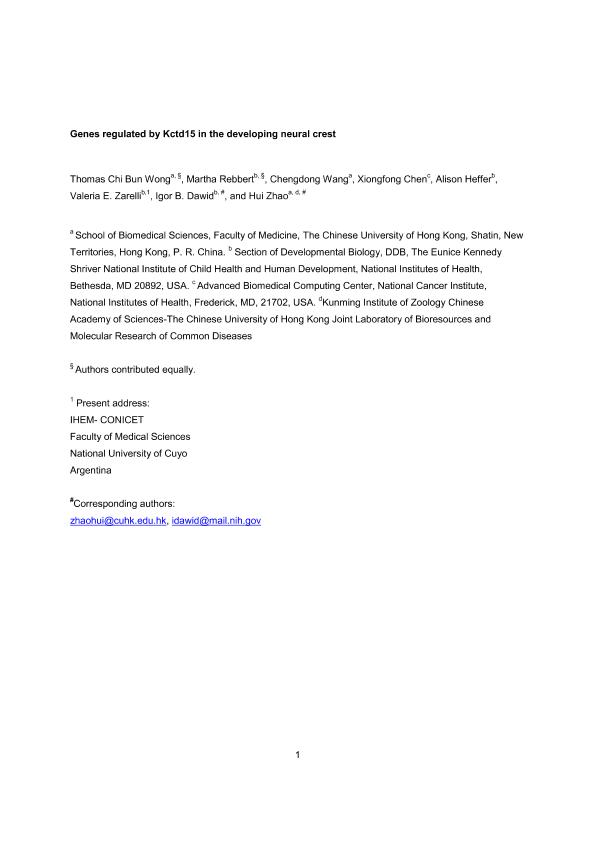Artículo
Genes regulated by potassium channel tetramerization domain containing 15 (Kctd15) in the developing neural crest
Bun Wong, Thomas Chi; Rebbert, Martha; Wang, Chengdong; Chen, Xiongfong; Heffer, Alison; Zarelli, Valeria Eugenia Paola ; Dawid, Igor B.; Zhao, Hui
; Dawid, Igor B.; Zhao, Hui
 ; Dawid, Igor B.; Zhao, Hui
; Dawid, Igor B.; Zhao, Hui
Fecha de publicación:
04/2016
Editorial:
U B C Press
Revista:
International Journal Of Developmental Biology
ISSN:
0214-6282
Idioma:
Inglés
Tipo de recurso:
Artículo publicado
Clasificación temática:
Resumen
Neural crest (NC) development is controlled precisely by a regulatory network with multiple signaling pathways and the involvement of many genes. The integration and coordination of these factors are still incompletely understood. Overexpression of Wnt3a and the BMP antagonist Chordin in animal cap cells from Xenopus blastulae induces a large number of NC specific genes. We previously suggested that Potassium Channel Tetramerization Domain containing 15 (Kctd15) regulates NC formation by affecting Wnt signaling and the activity of transcription factor AP-2. In order to advance understanding of the function of Kctd15 during NC development, we performed DNA microarray assays in explants injected with Wnt3a and Chordin, and identified genes that are affected by Kctd15 overexpression. Among the many genes identified, we chose Duf domain containing protein 1 (ddcp1), Platelet-Derived Growth Factor Receptor a (pdgfra), Complement factor properdin (cfp), Zinc Finger SWIM-Type Containing 5 (zswim5), and complement component 3 (C3) to examine their expression by whole mount in situ hybridization. Our work points to a possible role for Kctd15 in the regulation of NC formation and other steps in embryonic development.
Archivos asociados
Licencia
Identificadores
Colecciones
Articulos(IHEM)
Articulos de INST. HISTOLOGIA Y EMBRIOLOGIA DE MEND DR.M.BURGOS
Articulos de INST. HISTOLOGIA Y EMBRIOLOGIA DE MEND DR.M.BURGOS
Citación
Bun Wong, Thomas Chi; Rebbert, Martha; Wang, Chengdong; Chen, Xiongfong; Heffer, Alison; et al.; Genes regulated by potassium channel tetramerization domain containing 15 (Kctd15) in the developing neural crest; U B C Press; International Journal Of Developmental Biology; 60; 4-6; 4-2016; 159-166
Compartir
Altmétricas



